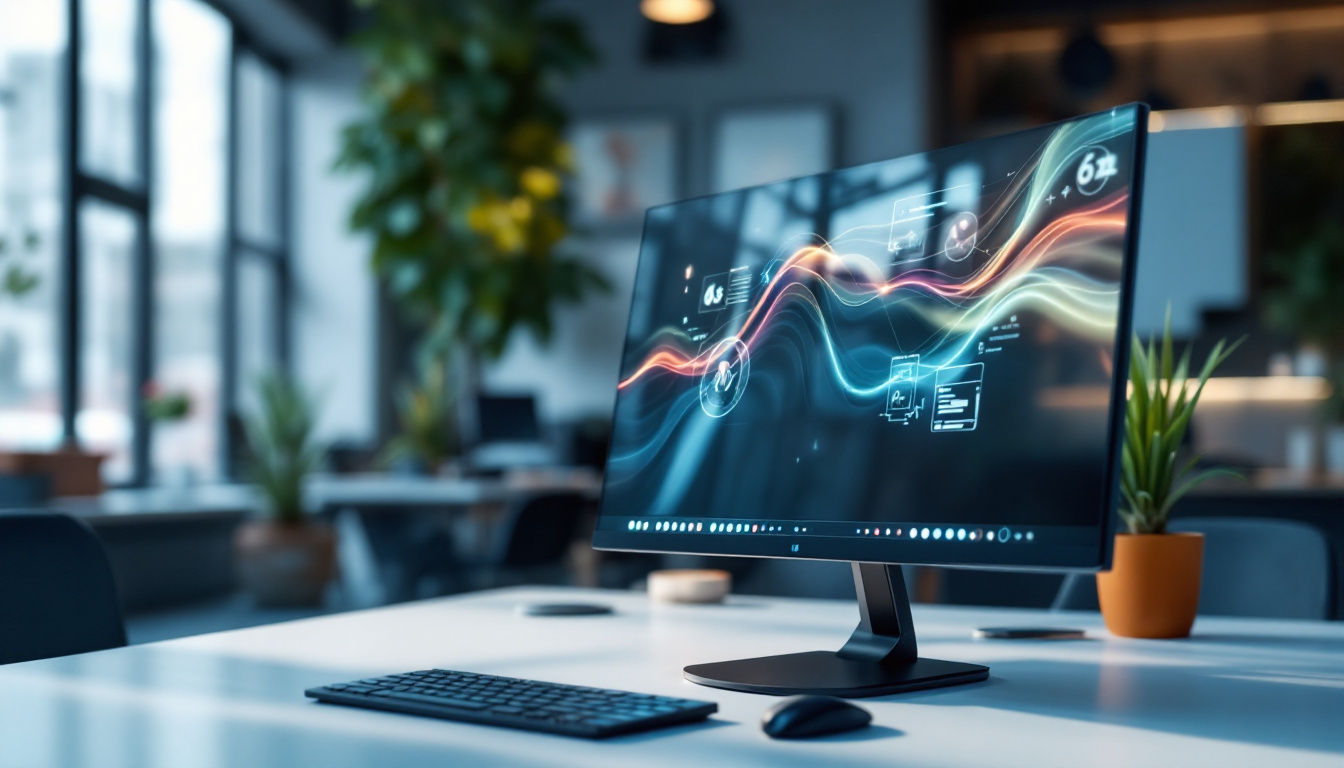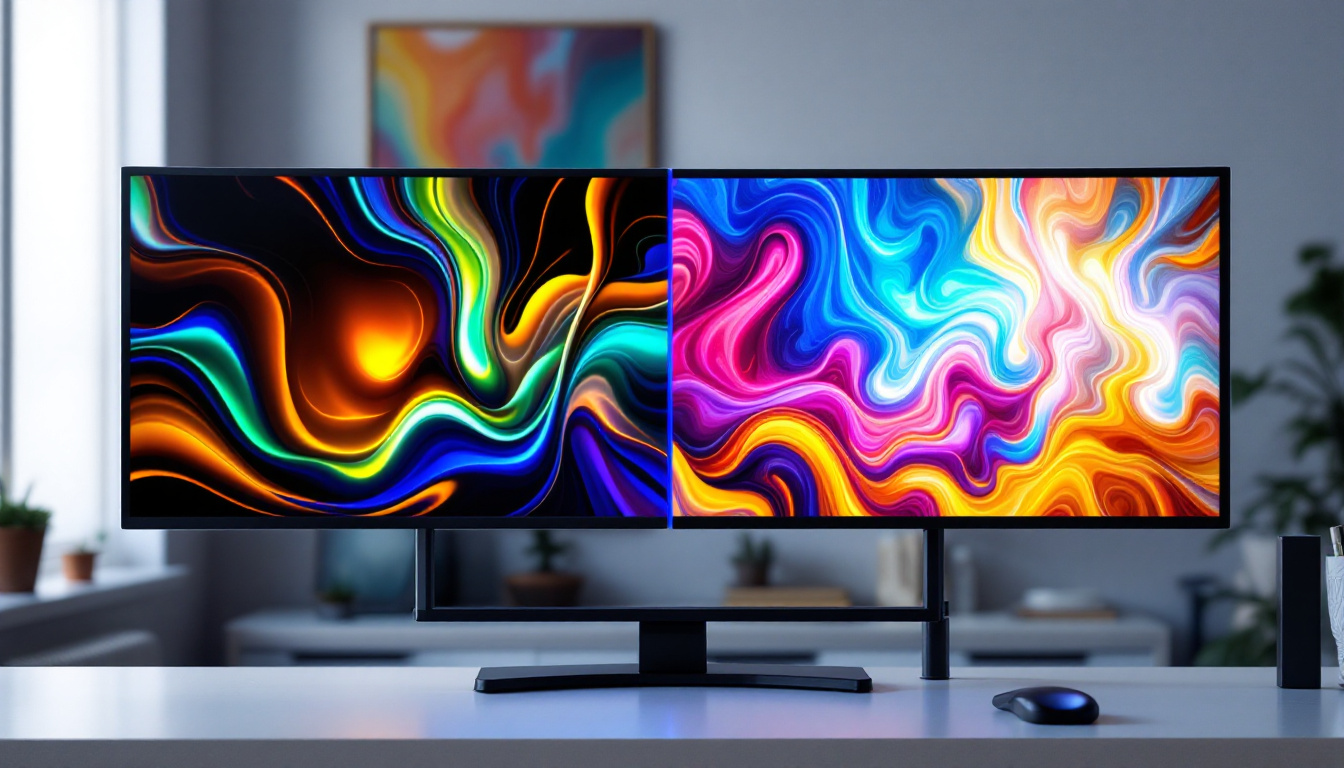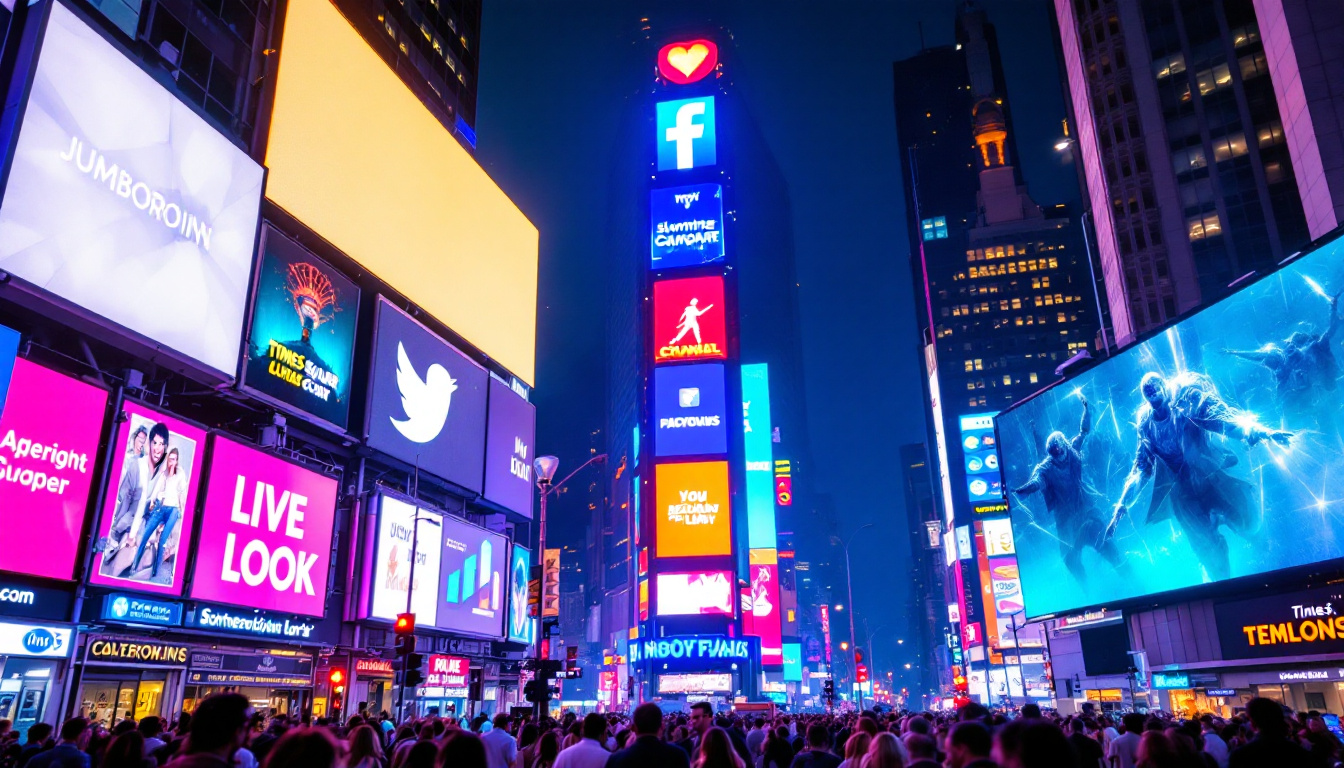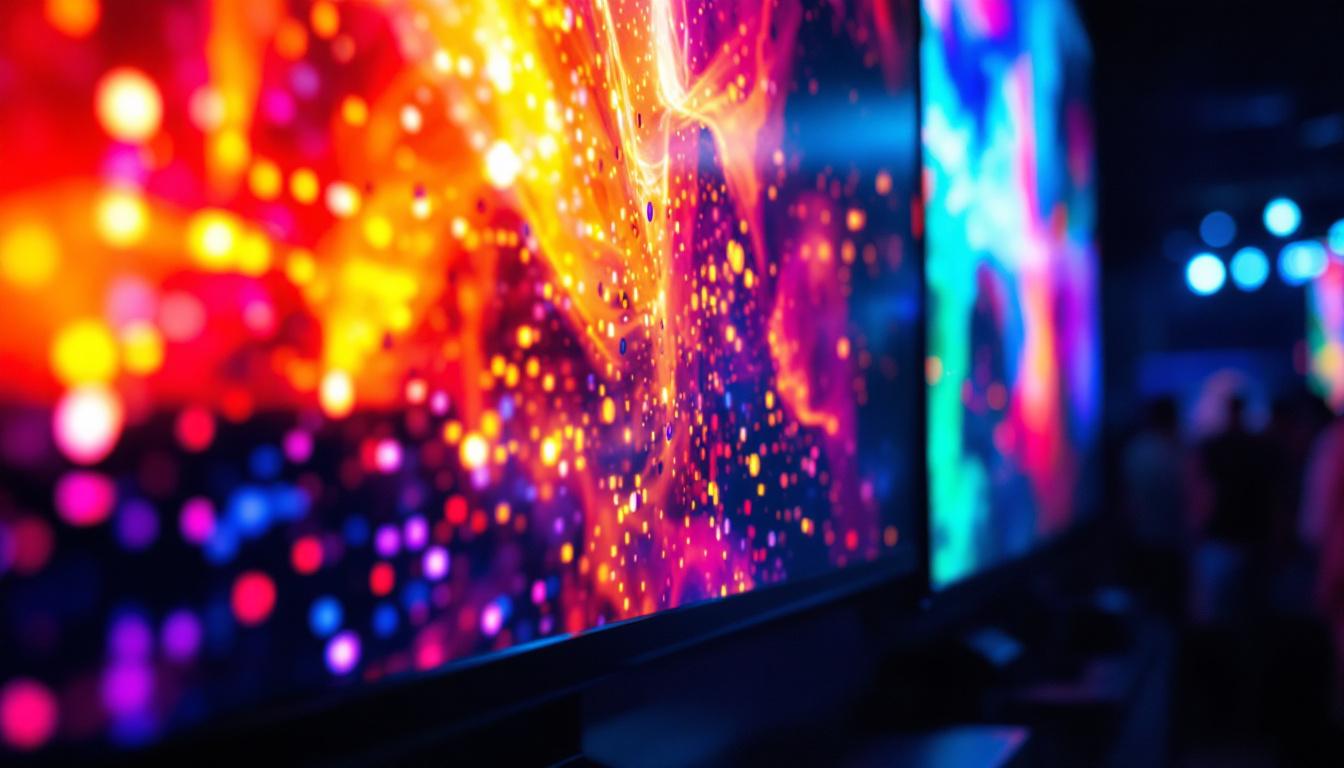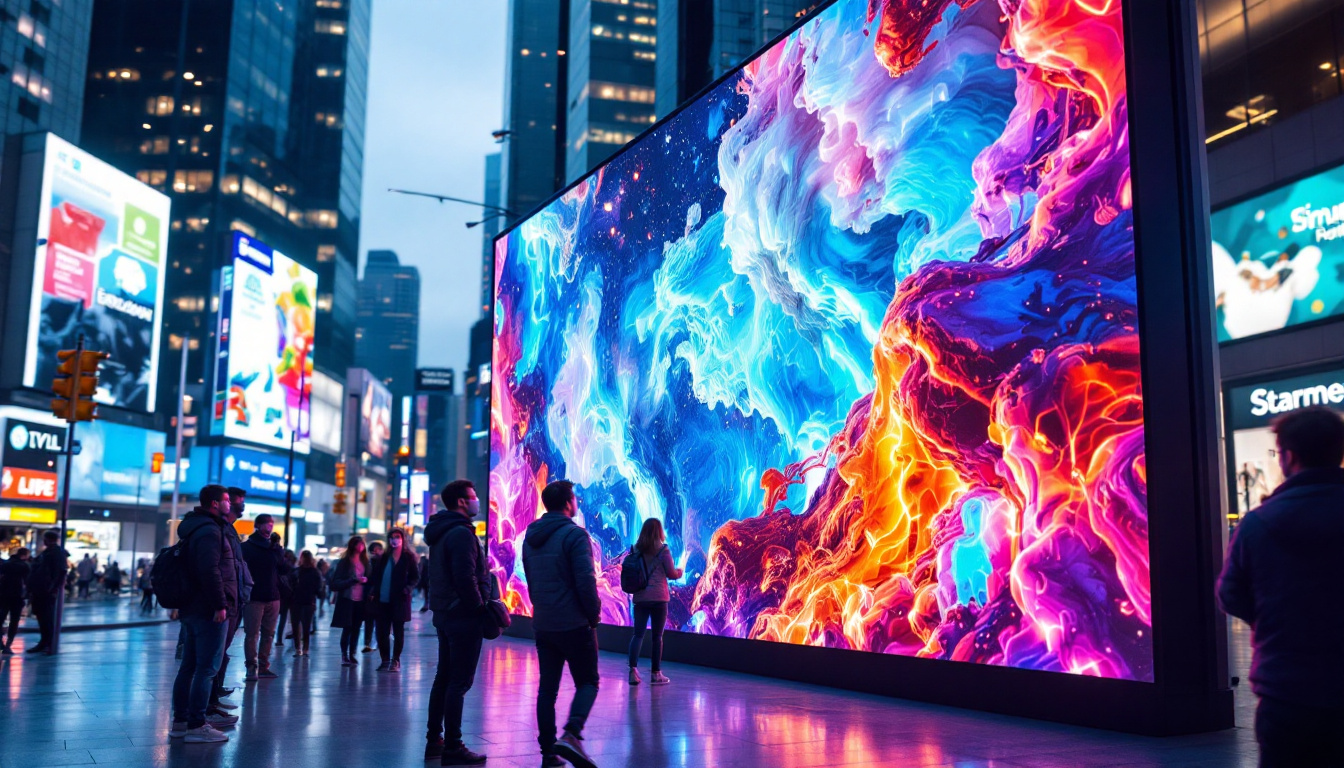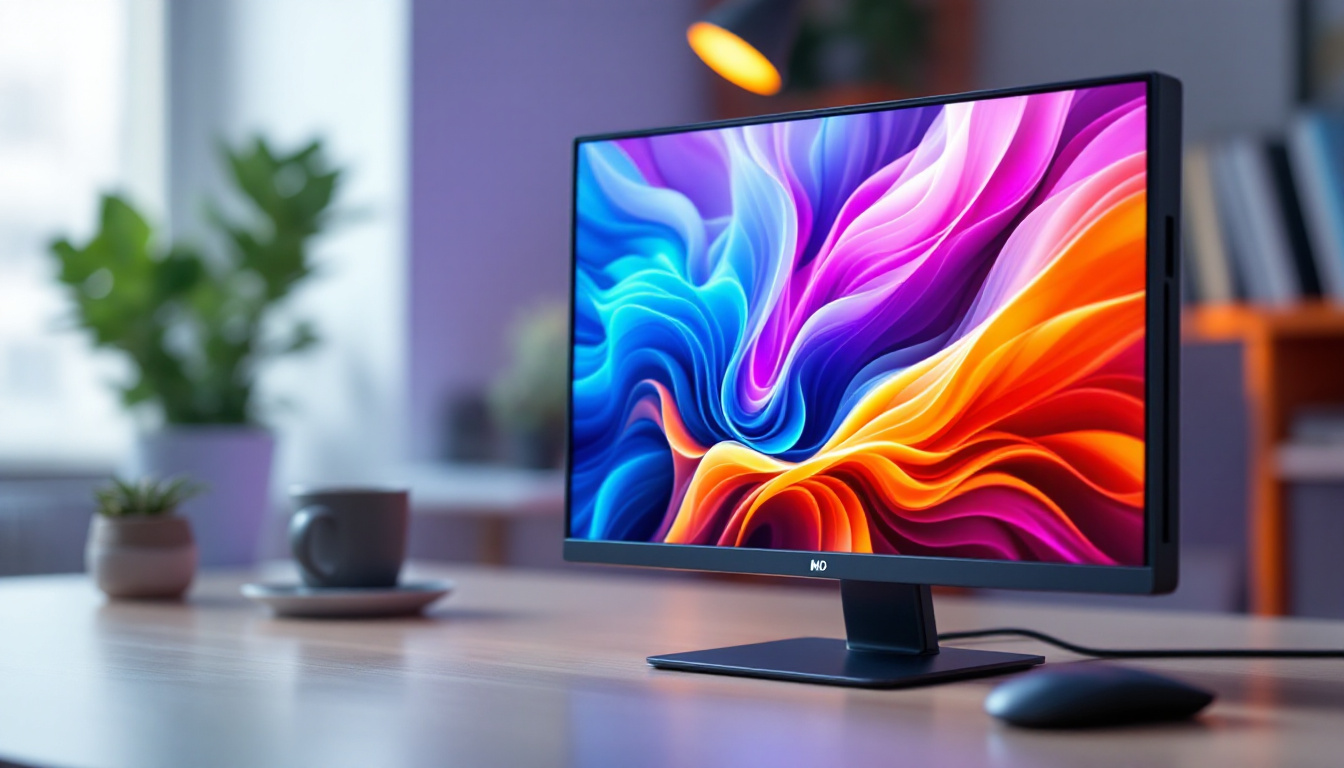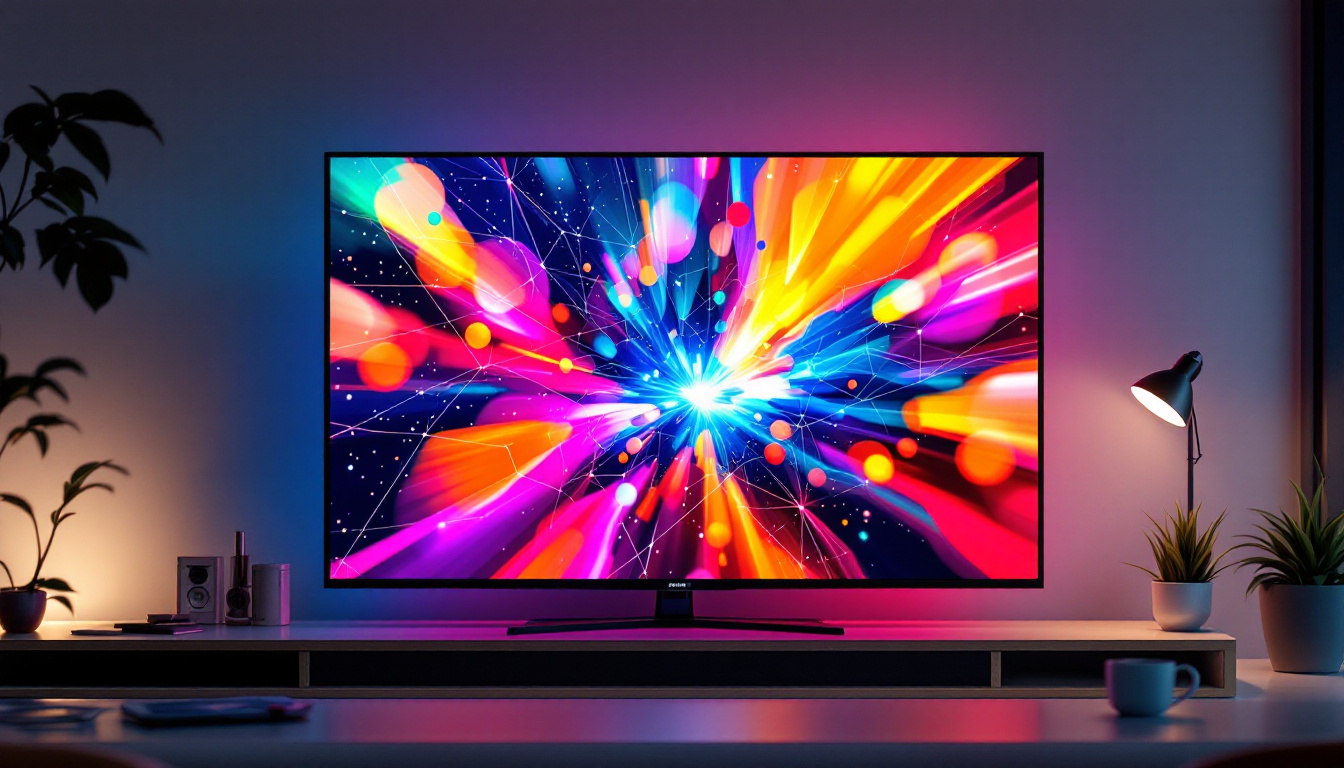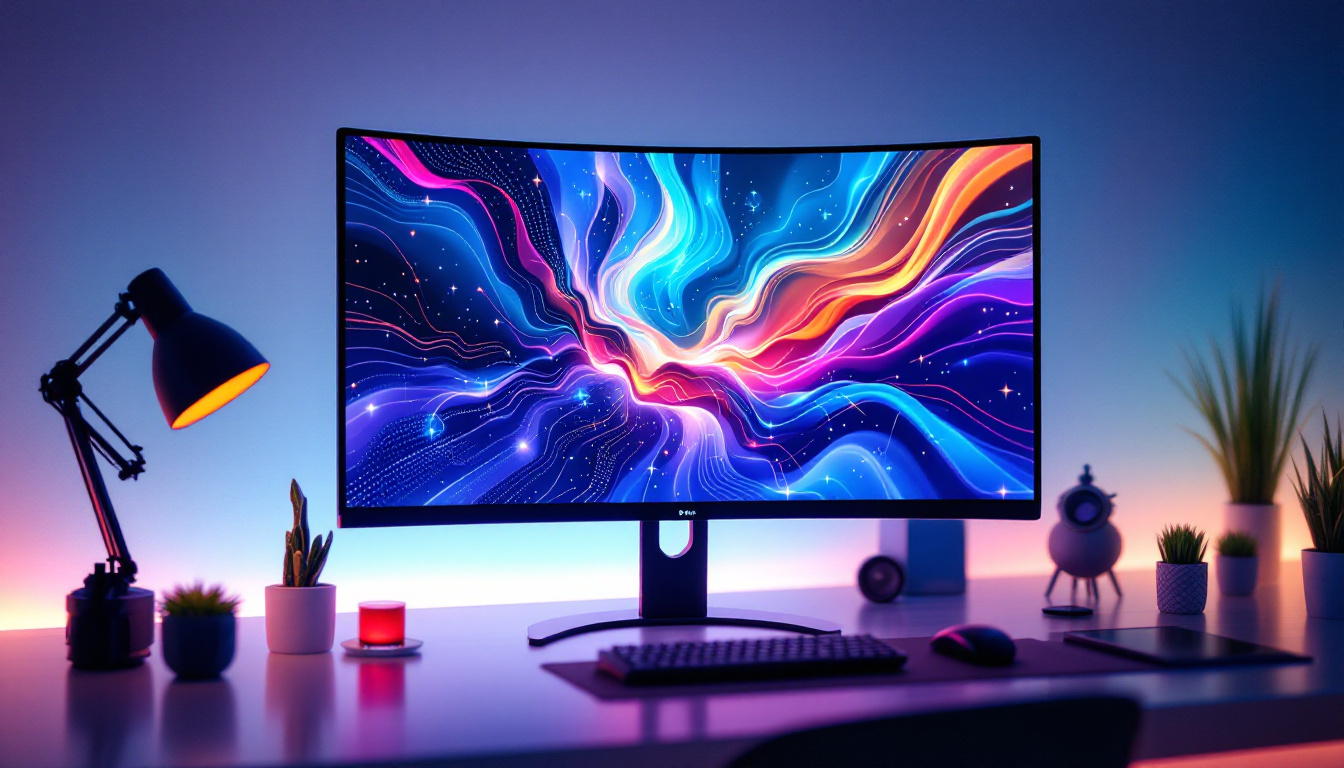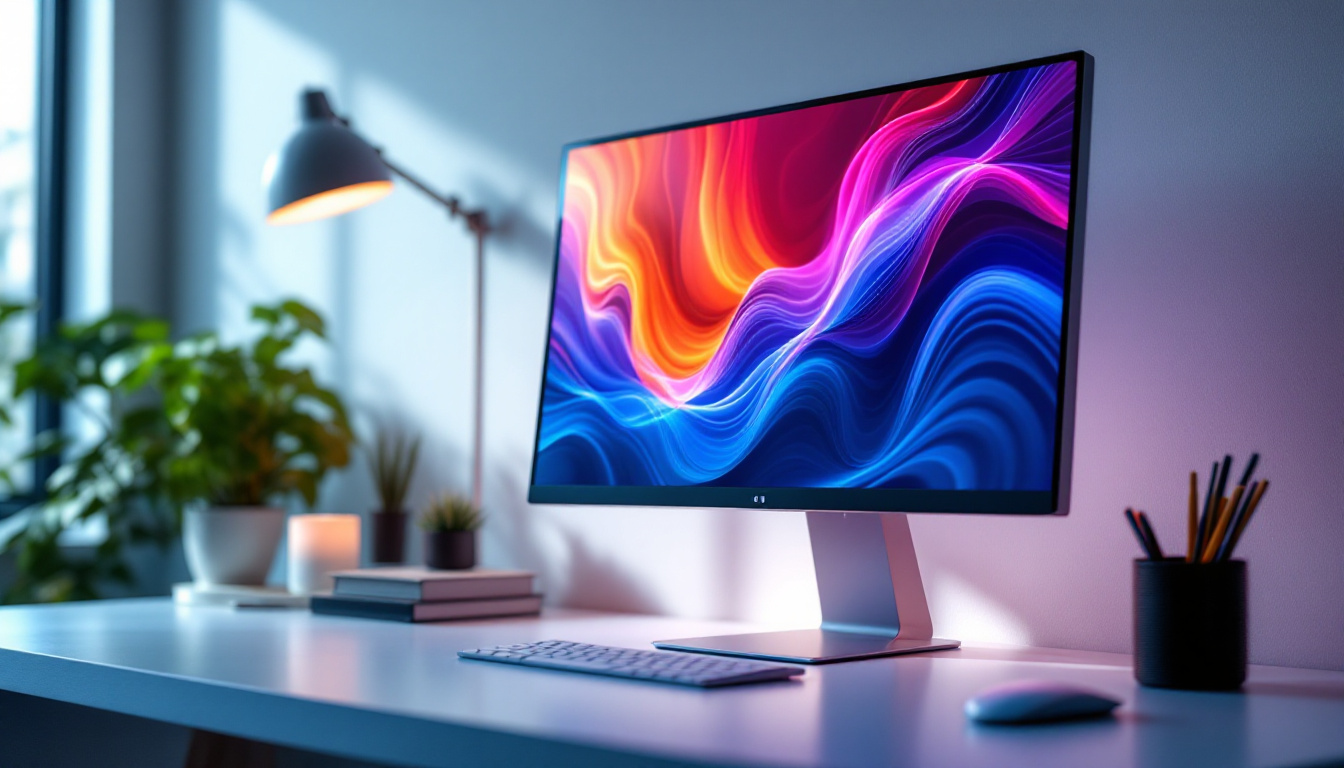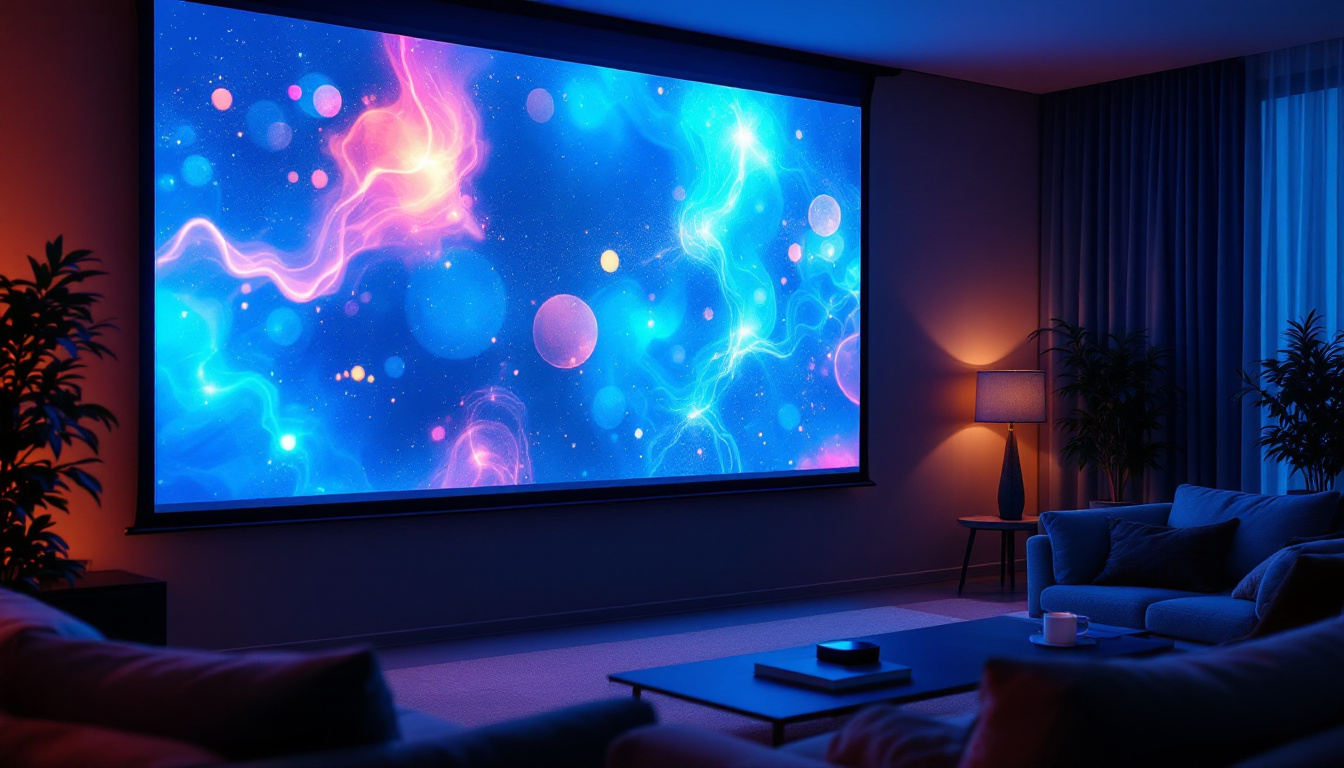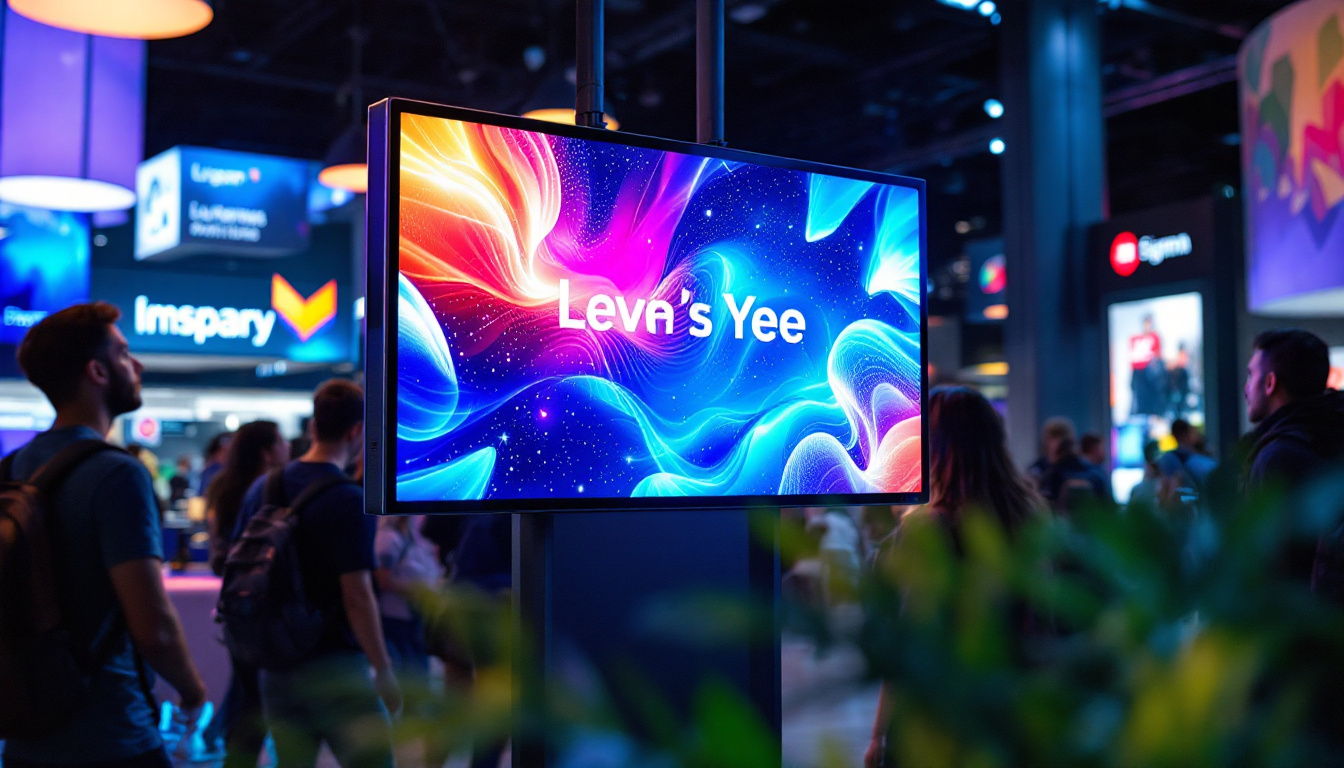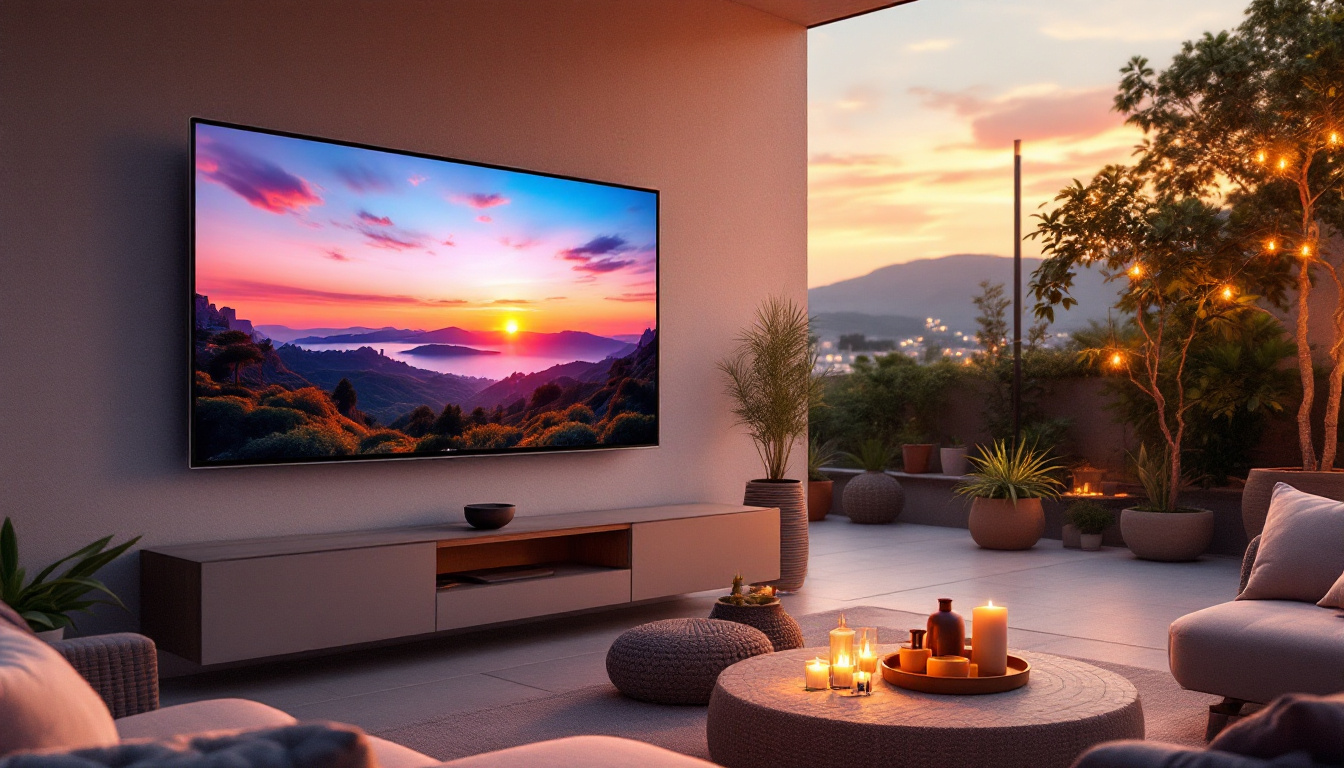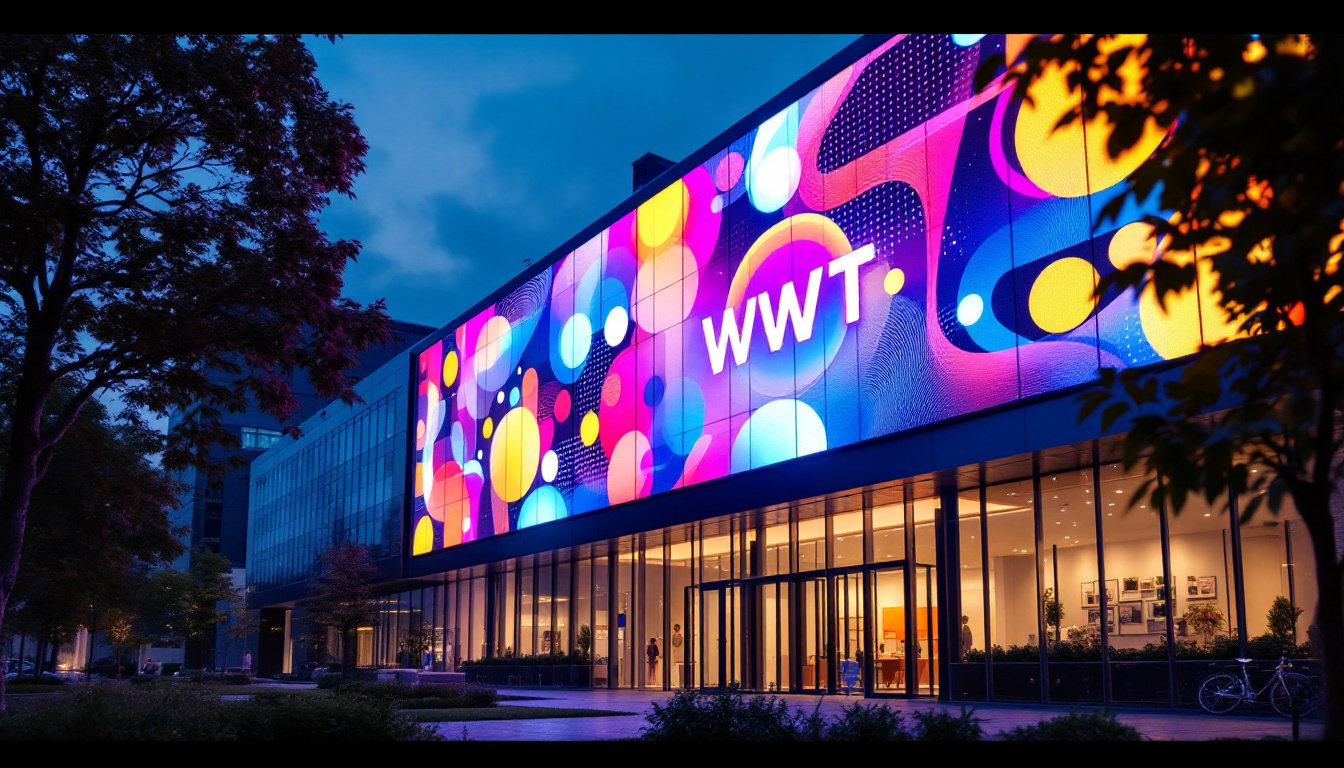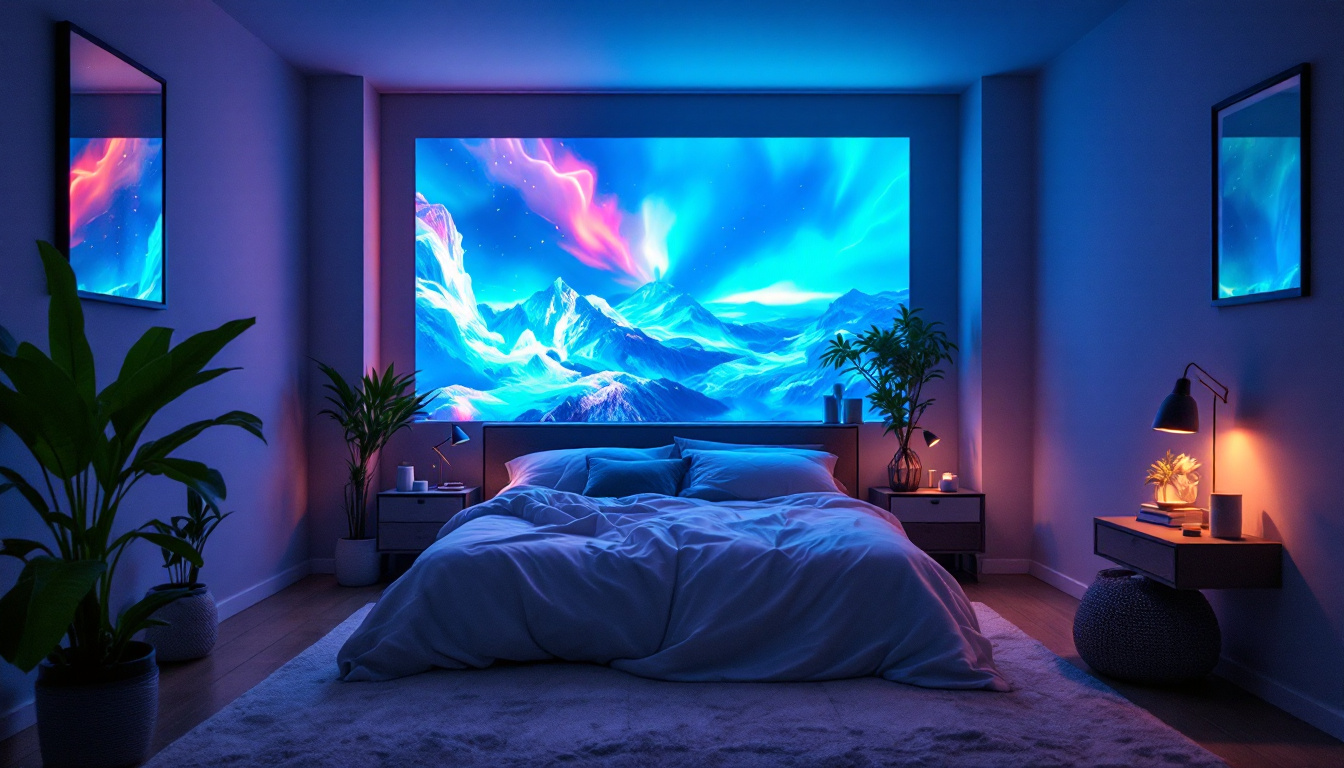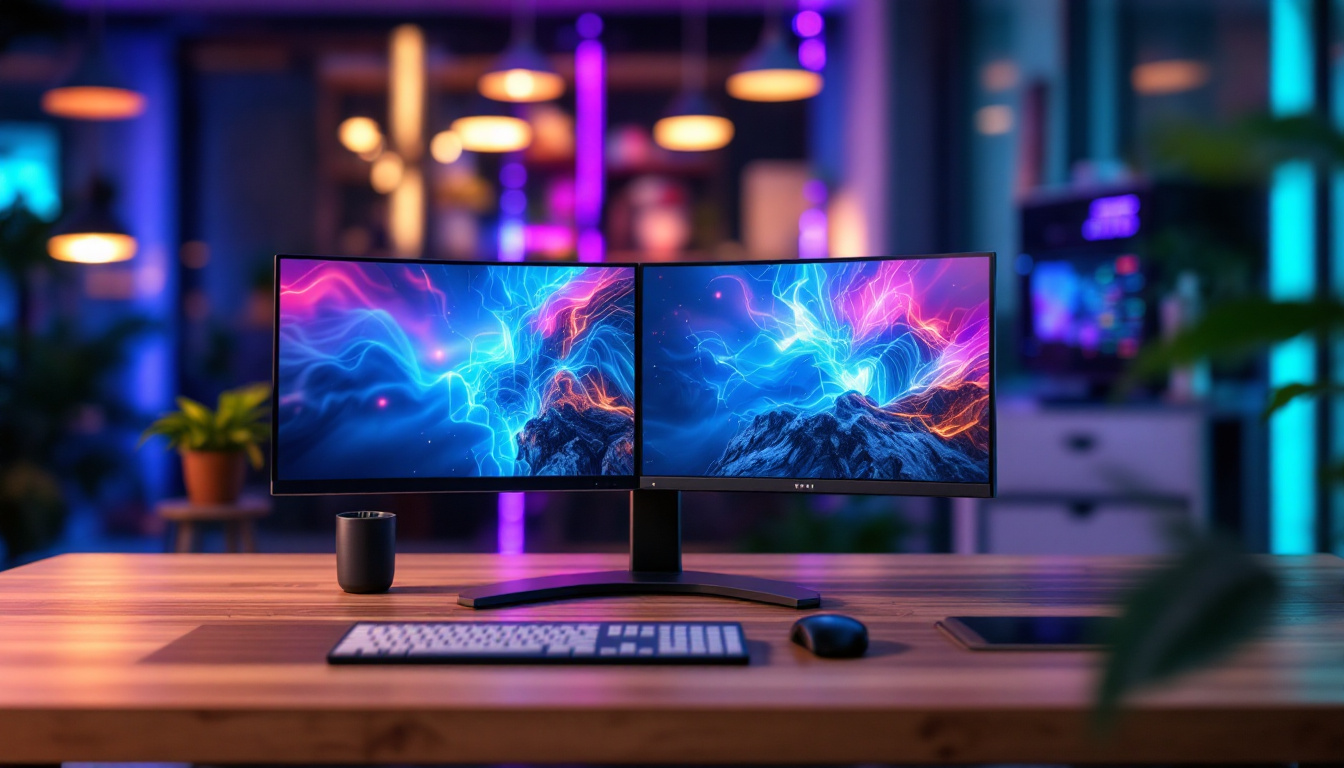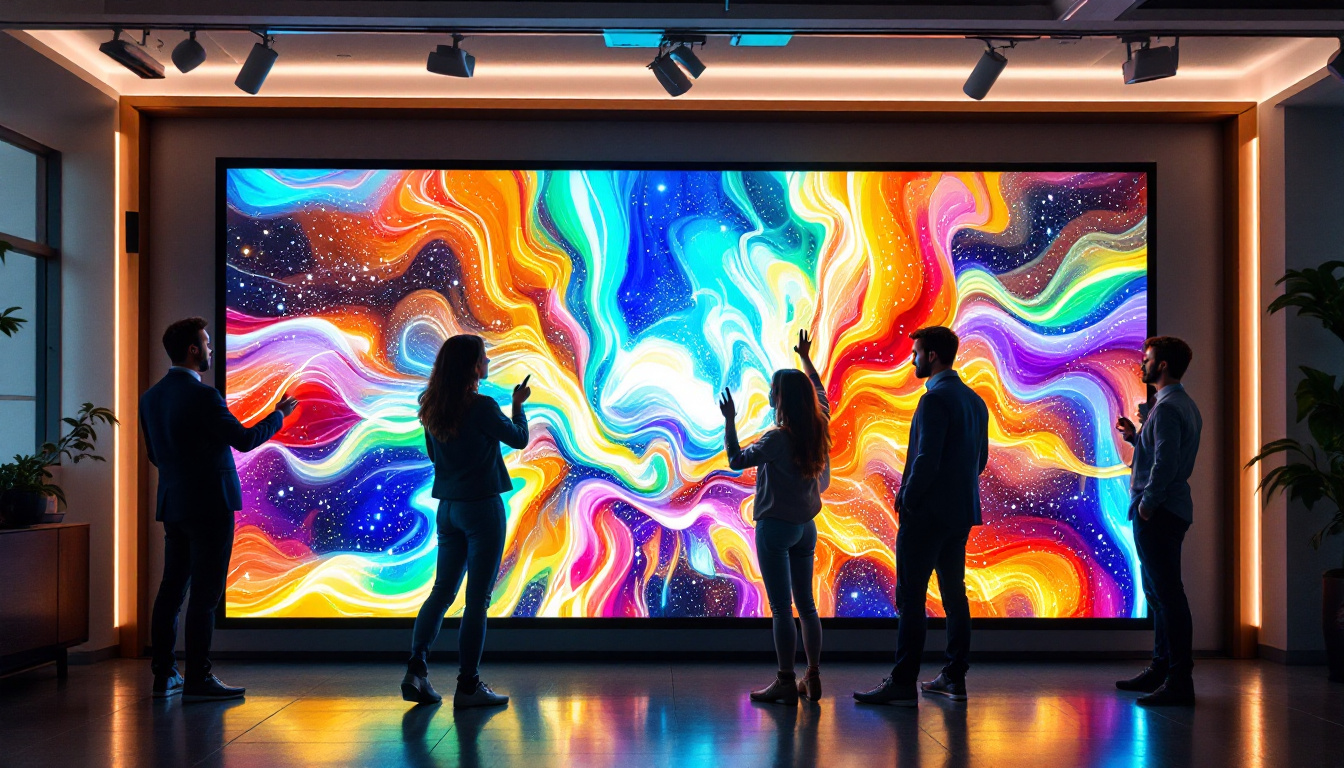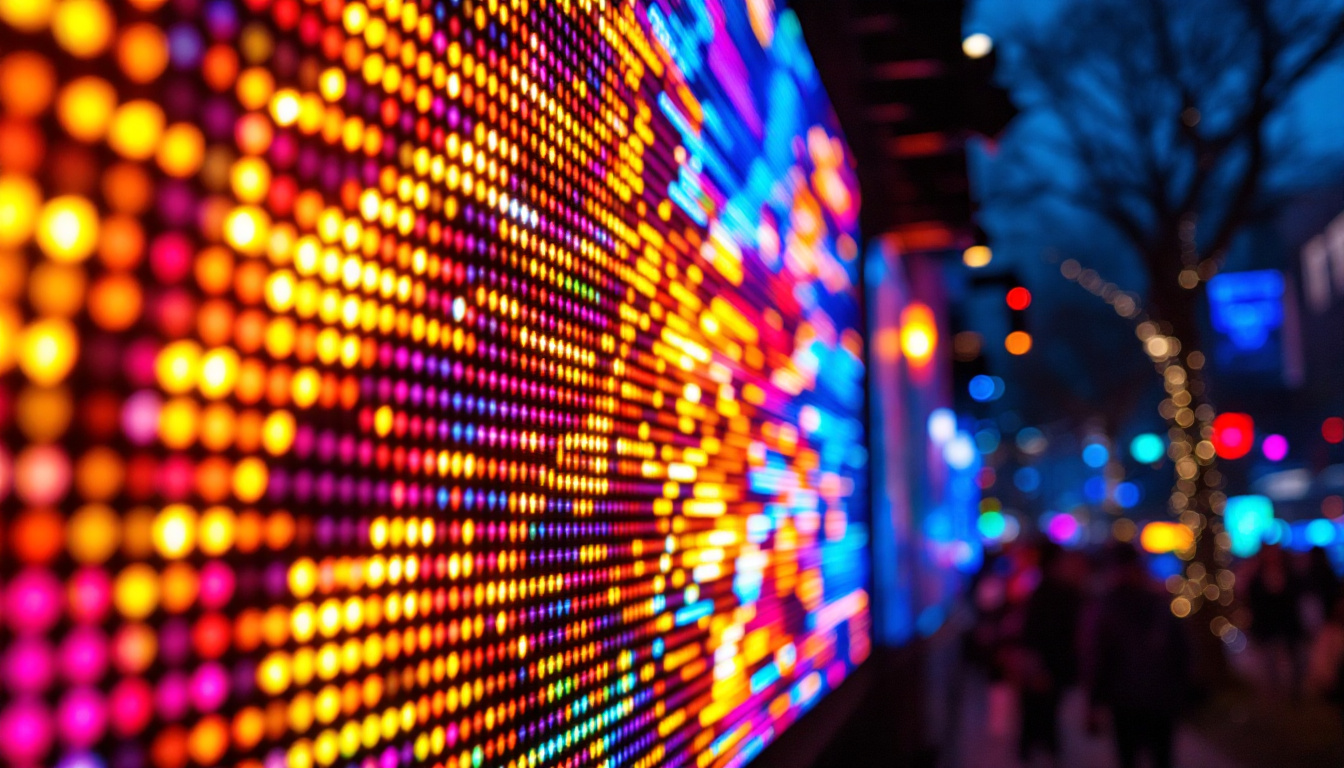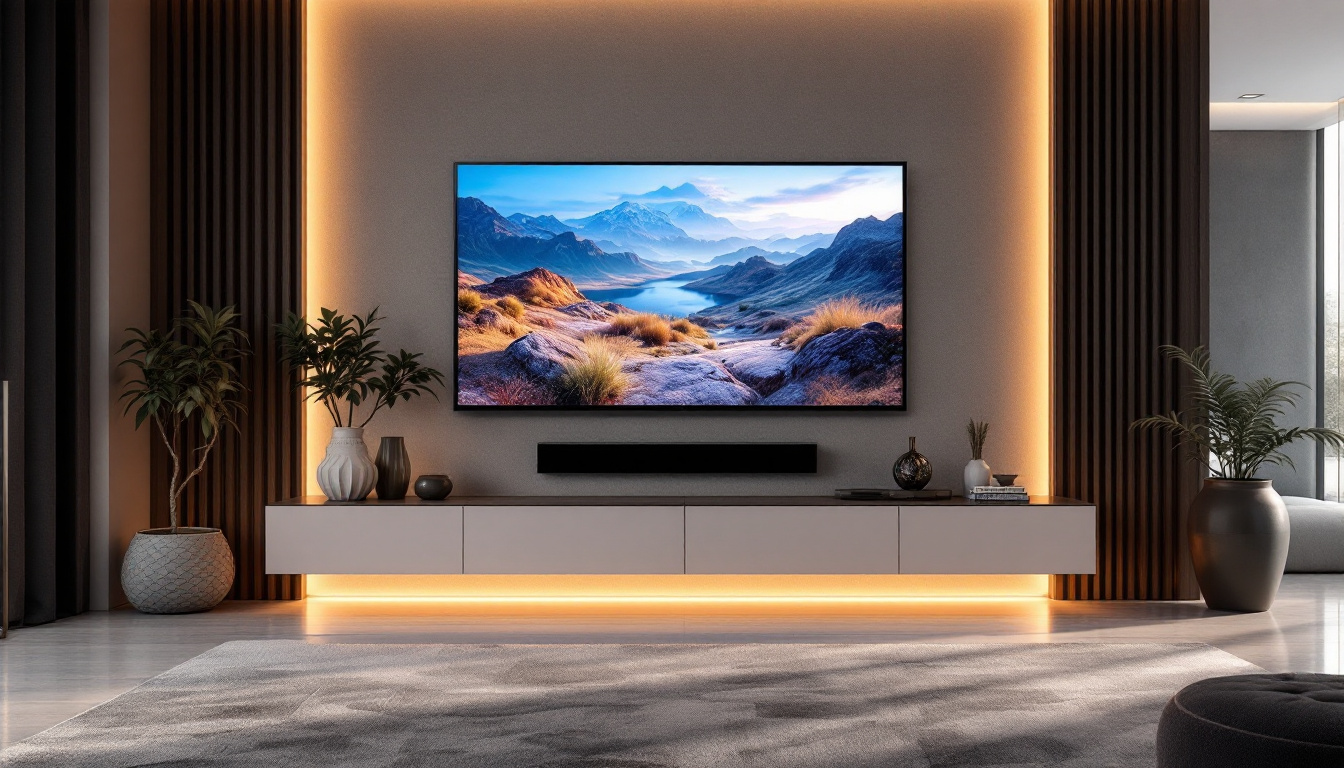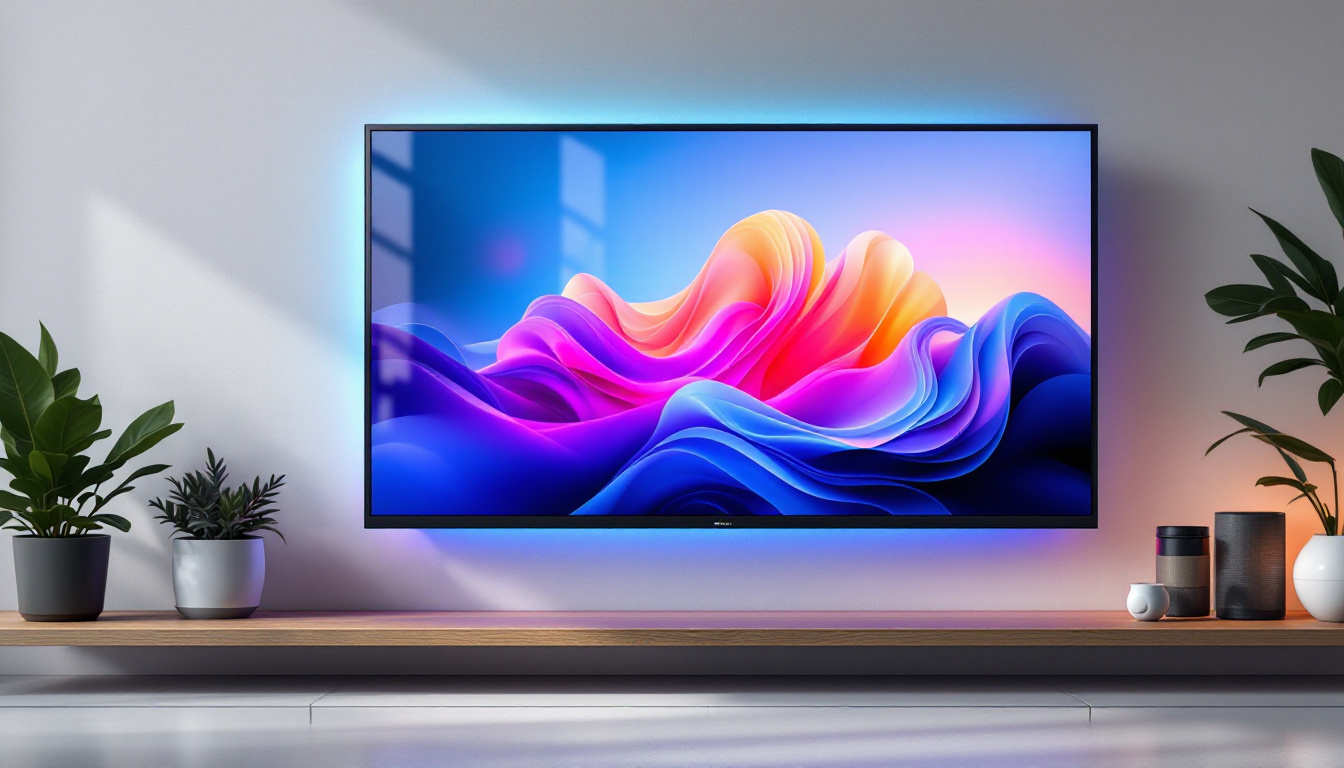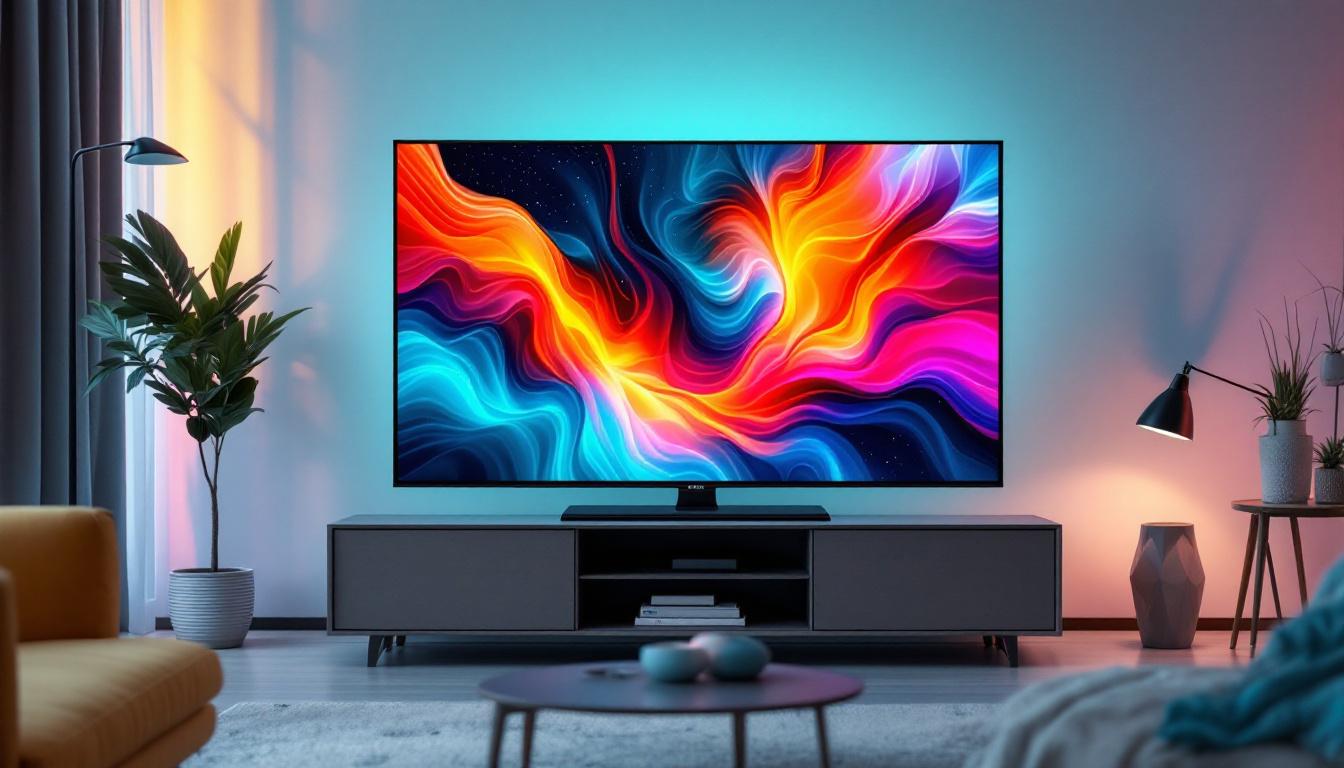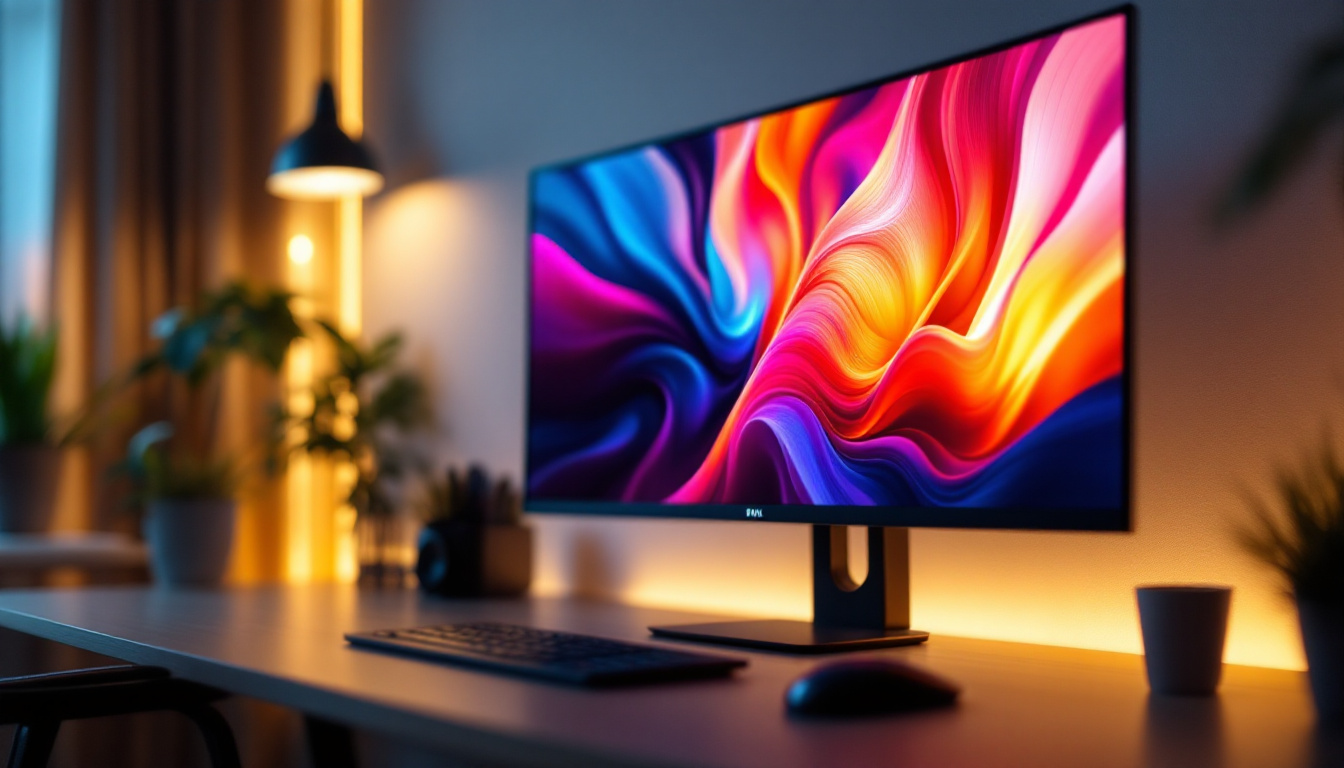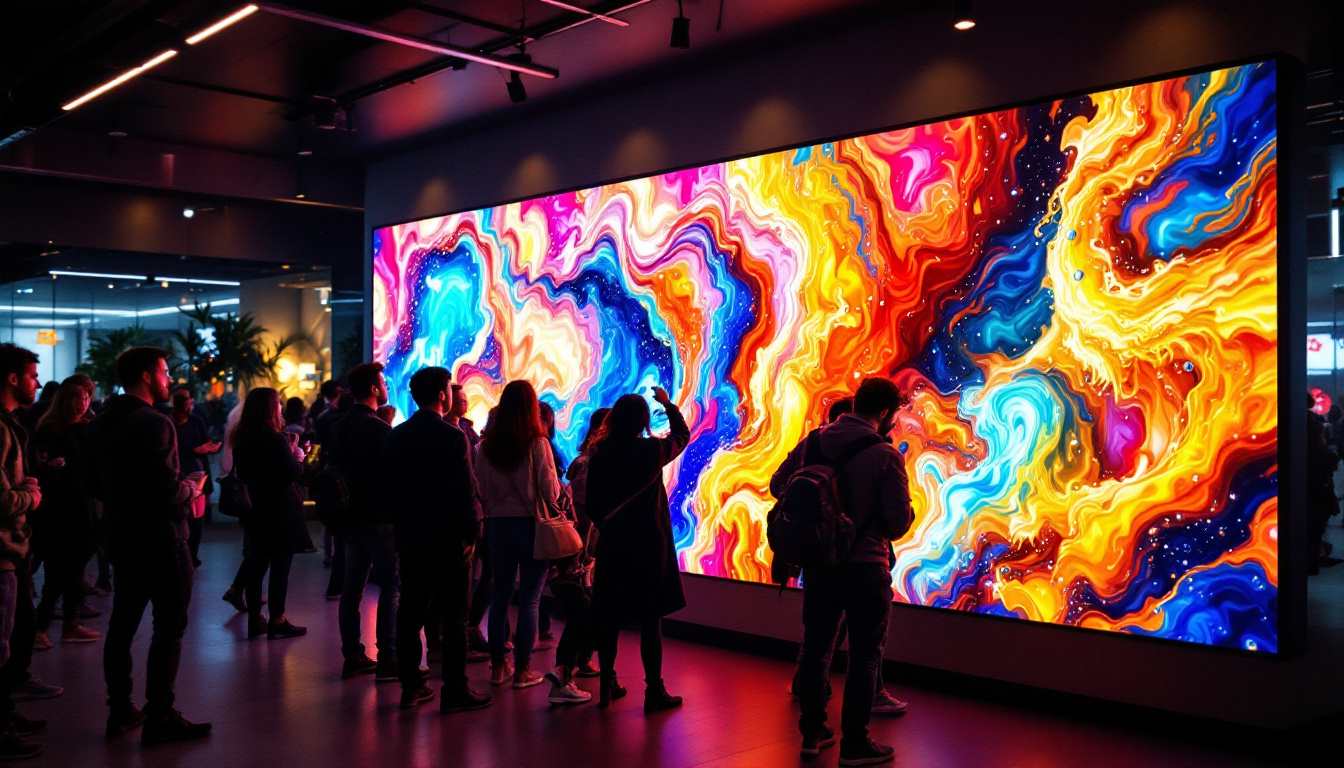In the ever-evolving landscape of technology, multi-touch desktop monitors have emerged as a revolutionary tool for both personal and professional use. These devices not only enhance user interaction but also offer a plethora of functionalities that traditional monitors cannot match. This article delves into the intricacies of multi-touch desktop monitors, focusing on LED display technology, its advantages, applications, and future prospects.
Understanding Multi-Touch Technology
Multi-touch technology allows users to interact with a display using multiple fingers or gestures simultaneously. This capability transforms the way people engage with digital content, making it more intuitive and interactive. From smartphones to tablets and interactive kiosks, multi-touch technology has become a fundamental aspect of modern user interfaces, enhancing the way we communicate, learn, and entertain ourselves.
How Multi-Touch Works
At its core, multi-touch technology utilizes capacitive sensors embedded within the display. These sensors detect the electrical properties of the human body, allowing the monitor to recognize the position and movement of fingers on the screen. When a finger touches the surface, it creates a change in capacitance, which is then translated into touch commands. This process happens almost instantaneously, providing users with a seamless experience as they navigate through applications or manipulate digital objects.
Modern multi-touch screens can recognize various gestures, such as pinch-to-zoom, swipe, and rotation. This versatility enables users to manipulate images, navigate applications, and perform complex tasks with ease, enhancing productivity and user experience. For instance, in graphic design software, artists can use multi-touch gestures to rotate and scale their work effortlessly, while in gaming, players can execute complex maneuvers with simple finger movements. The potential applications of multi-touch technology are vast, spanning across industries like education, healthcare, and entertainment.
Types of Multi-Touch Displays
There are primarily two types of multi-touch displays: resistive and capacitive. Resistive displays respond to pressure, making them compatible with styluses and gloves. However, they generally offer lower clarity and responsiveness compared to capacitive displays, which rely on the electrical properties of the human body. This makes resistive screens more suitable for environments where durability is crucial, such as industrial settings or outdoor kiosks.
Capacitive displays, on the other hand, are more prevalent in modern multi-touch monitors due to their superior sensitivity and clarity. They provide a more responsive touch experience, making them ideal for applications that require precision and speed. Additionally, advancements in capacitive technology have led to the development of multi-touch screens that can recognize more than ten simultaneous touch points, opening up new possibilities for collaborative work and interactive experiences. As technology continues to evolve, we can expect even more innovative uses for multi-touch displays, further integrating them into our daily lives and enhancing our interactions with technology.
LED Display Technology
LED (Light Emitting Diode) technology has revolutionized the way displays function, offering brighter images, improved energy efficiency, and longer lifespans compared to traditional LCD screens. Understanding LED technology is crucial for appreciating the benefits it brings to multi-touch desktop monitors.
The Basics of LED Displays
LED displays utilize an array of tiny light-emitting diodes to produce images. Unlike traditional LCDs that use a backlight, LED displays can achieve higher brightness levels and better contrast ratios. This is because each pixel can emit its own light, resulting in more vibrant colors and deeper blacks.
Furthermore, LED technology allows for thinner and lighter monitor designs, making them more aesthetically pleasing and easier to integrate into various workspaces. The compact nature of LED displays also contributes to their energy efficiency, leading to lower electricity bills and a reduced carbon footprint. This shift towards more sustainable technology is increasingly important as businesses and consumers alike become more environmentally conscious.
Advantages of LED Displays in Multi-Touch Monitors
When combined with multi-touch technology, LED displays offer several distinct advantages. First and foremost is the enhanced visual experience. The vibrant colors and sharp images produced by LED screens make them ideal for graphic design, video editing, and gaming.
Additionally, the energy efficiency of LED displays translates to longer usage times without overheating, which is particularly beneficial in environments where monitors are used for extended periods. This durability makes LED multi-touch monitors a reliable choice for businesses and educational institutions alike. Moreover, the responsiveness of these displays enhances user interaction, allowing for seamless gestures and multi-user collaboration, which is increasingly vital in today’s fast-paced, tech-driven world.
Another significant advantage of LED displays is their adaptability to various lighting conditions. Whether in a brightly lit office or a dimly lit classroom, LED screens maintain clarity and visibility, ensuring that users can engage with content without straining their eyes. This versatility is complemented by the wide viewing angles offered by many LED monitors, allowing multiple users to view the screen from different positions without a loss of image quality. Such features make LED multi-touch monitors not only practical but also essential tools for presentations, workshops, and interactive learning environments.
Applications of Multi-Touch Desktop Monitors
The versatility of multi-touch desktop monitors makes them suitable for a wide range of applications across various industries. From education to healthcare, the potential uses are vast and varied.
In Education
Multi-touch monitors have transformed classrooms into interactive learning environments. Educators can use these displays to engage students with dynamic presentations, interactive lessons, and collaborative projects. The ability to use gestures and touch enhances student participation and retention of information.
Moreover, these monitors facilitate remote learning by allowing instructors to share screens and interact with students in real-time, making education more accessible and engaging. This technology also supports diverse learning styles, catering to visual, auditory, and kinesthetic learners through interactive simulations and multimedia content. As a result, students can explore complex concepts in a hands-on manner, fostering a deeper understanding of the subject matter.
In Business
In the corporate world, multi-touch desktop monitors are becoming essential tools for presentations and collaborative work. They enable teams to brainstorm ideas, visualize data, and create presentations in a more interactive manner. The ability to manipulate data with gestures allows for a more fluid and dynamic workflow.
Additionally, businesses can utilize these monitors for customer engagement in retail environments. interactive displays can showcase products, provide information, and even facilitate transactions, enhancing the overall customer experience. By integrating these monitors into their marketing strategies, companies can create immersive experiences that captivate consumers, allowing them to explore products in a virtual space. This not only drives sales but also builds brand loyalty as customers feel more connected to the products they are considering.
In Healthcare
In the healthcare sector, multi-touch monitors are being used for various purposes, including patient monitoring and medical imaging. Surgeons can interact with 3D models and imaging software during procedures, allowing for greater precision and improved outcomes.
Furthermore, these monitors can be used for patient education, enabling healthcare providers to explain complex medical information in a more understandable manner. The interactive aspect of multi-touch technology fosters better communication between patients and providers. For instance, doctors can visually demonstrate treatment options or anatomical structures, making it easier for patients to grasp their health conditions. Additionally, multi-touch monitors can serve as platforms for telemedicine, allowing healthcare professionals to consult with patients remotely while sharing visual data, thus bridging the gap between technology and personal care.
Choosing the Right Multi-Touch Desktop Monitor
When selecting a multi-touch desktop monitor, several factors must be considered to ensure it meets the specific needs of the user or organization.
Screen Size and Resolution
The size and resolution of the monitor are critical aspects to consider. Larger screens with higher resolutions provide a more immersive experience, particularly for applications that require detailed visuals, such as graphic design or video editing. A minimum resolution of 1920×1080 (Full HD) is recommended for most professional applications.
Touch Sensitivity and Technology
Different monitors feature varying levels of touch sensitivity. It is essential to choose a monitor that offers a responsive touch experience, especially for tasks that require precision. Capacitive multi-touch technology is generally preferred for its superior responsiveness and accuracy.
Connectivity Options
Connectivity is another crucial factor. Ensure that the monitor has multiple ports, such as HDMI, USB-C, and DisplayPort, to accommodate various devices. This flexibility allows for seamless integration into existing setups, whether in a home office or a corporate environment.
Future Trends in Multi-Touch Monitors
The future of multi-touch desktop monitors looks promising, with several trends emerging that are likely to shape their evolution.
Integration with Augmented Reality (AR)
As augmented reality technology continues to advance, the integration of AR with multi-touch monitors is expected to enhance user interaction significantly. This combination could revolutionize fields such as education, design, and healthcare, allowing users to manipulate 3D models and data in real-time.
Improved Gesture Recognition
Future developments in gesture recognition technology will likely lead to even more intuitive interactions with multi-touch monitors. Enhanced algorithms will enable devices to recognize a wider range of gestures and movements, making the user experience more seamless and engaging.
Sustainability and Energy Efficiency
As environmental concerns grow, manufacturers are increasingly focusing on sustainability. Future multi-touch monitors are expected to be more energy-efficient and made from eco-friendly materials. This shift not only benefits the environment but also appeals to consumers who prioritize sustainability in their purchasing decisions.
Conclusion
Multi-touch desktop monitors equipped with LED display technology represent a significant advancement in how users interact with digital content. Their versatility and functionality make them invaluable tools across various industries, from education to healthcare.
As technology continues to evolve, the potential applications and benefits of these monitors will only expand. By understanding the intricacies of multi-touch technology and LED displays, users can make informed decisions that enhance their productivity and engagement in an increasingly digital world.
The future of multi-touch monitors is bright, promising innovations that will further enrich user experiences and redefine the boundaries of interaction with technology.
Discover LumenMatrix’s Advanced LED Display Solutions
Ready to elevate your interactive experience with the latest in multi-touch and LED display technology? Look no further than LumenMatrix, where innovation meets visual brilliance. Our comprehensive range of LED display modules, from Indoor and Outdoor LED Walls to specialized solutions like Vehicle and Sports Displays, are designed to transform your space and captivate your audience. Embrace the future of digital engagement with LumenMatrix and let your brand shine like never before. Check out LumenMatrix LED Display Solutions today and step into a world of unparalleled clarity and impact.

